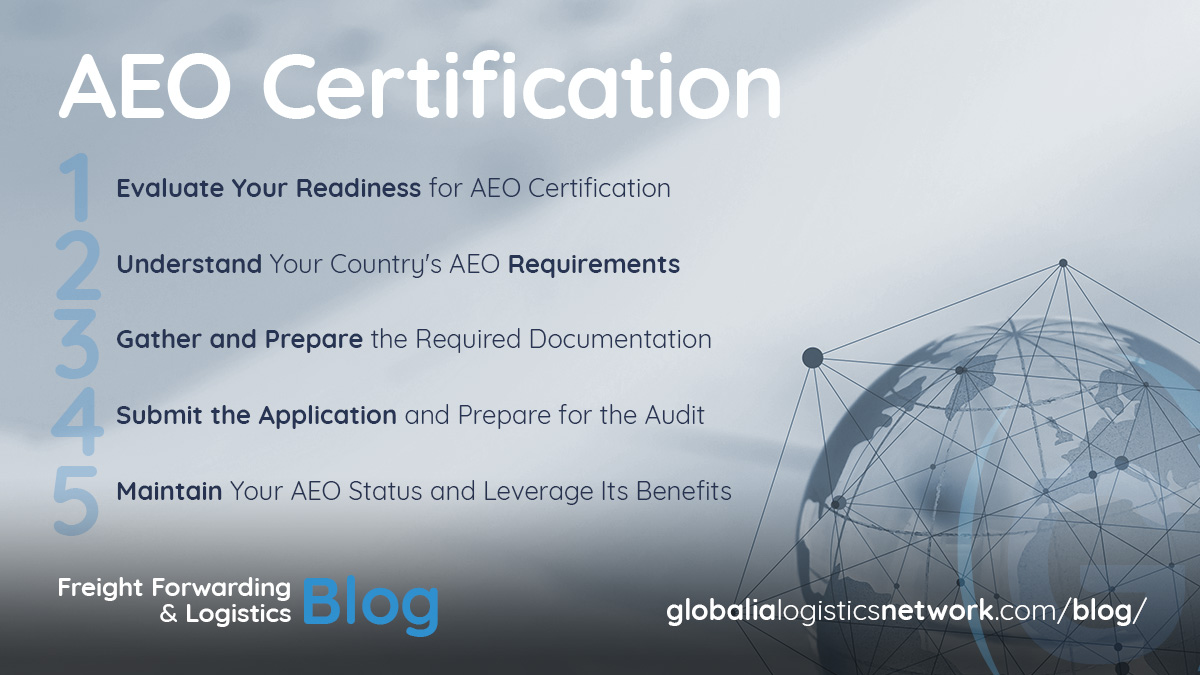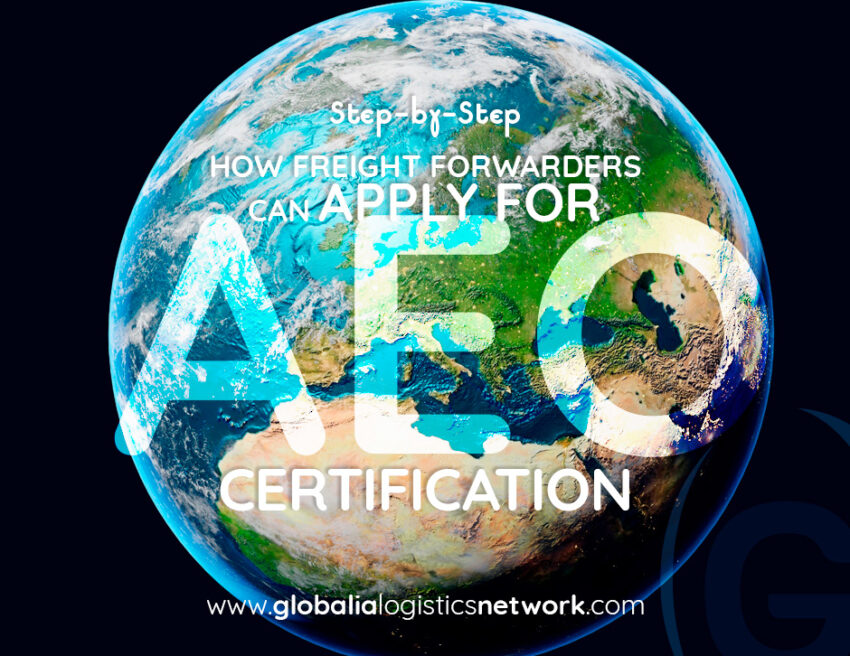In today’s global supply chain, trust is currency. The more trustworthy and compliant your logistics business is, the more attractive it becomes to clients, customs authorities, and trade partners. This is why AEO for freight forwarders isn’t just a regulatory checkbox—it’s a strategic move that places your company ahead of the curve in terms of credibility, efficiency, and global reach.
Authorized Economic Operator (AEO) status is a designation granted by customs authorities to businesses that demonstrate strong internal controls, financial solvency, and a commitment to secure, compliant trade practices. For freight forwarders, who operate at the heart of international commerce, gaining AEO status can mean smoother customs processes, fewer inspections, and increased global business opportunities.
But how do you actually get there? If you’re a freight forwarder aiming to become AEO-certified, this blog walks you through each stage of the process—breaking down what can feel like a complex journey into clear, actionable steps.
Understanding the basics of AEO for freight forwarders
Before jumping into the application process, it’s essential to understand what AEO for freight forwarders really means in practical terms. Introduced by the World Customs Organization as part of the SAFE Framework, AEO certification serves as proof that your company adheres to strict customs compliance and security standards.
Most customs authorities—such as the EU, US (via CTPAT), UK, Singapore, and India—have adopted AEO programs. While the criteria vary slightly depending on the region, the core principles remain the same: reliability, security, and a transparent supply chain.
For freight forwarders, being AEO-certified enhances your reputation as a trusted logistics partner. It can open doors to priority treatment at borders, access to mutual recognition agreements (MRAs) across countries, and even commercial contracts that require AEO status as a minimum qualification.

Step 1: Evaluate your readiness for AEO certification
The first step is introspection. You need to assess whether your business is ready to undergo the rigorous compliance checks that come with an AEO application. Start by reviewing your internal procedures across several key areas: customs compliance, security protocols, financial records, risk management, and data integrity.
A good starting point is to conduct an internal audit—or even better, hire an external consultant who specializes in AEO for freight forwarders. This assessment will highlight gaps in your current system and help you prioritize improvements before submitting your application.
This stage is also the time to secure senior management buy-in. AEO certification is not a one-time effort but a long-term commitment that requires cultural alignment and staff cooperation across departments.
Step 2: Understand your country’s AEO requirements
Every customs authority has its own AEO framework. For example, the EU offers two types: AEO-C (customs simplification) and AEO-S (security and safety), while the UK categorizes its AEO scheme similarly. In India, AEO has tiers like AEO-T1, T2, and T3. The US runs the CTPAT program, which functions similarly to AEO.
You’ll need to visit your national customs authority’s website and thoroughly review their AEO guidelines, checklists, and application forms. Some may require electronic submission through a government portal, while others might involve submitting hard copies of documentation.
If you’re applying from a region with a mutual recognition agreement, such as the EU and Japan, or the UK and the US, you can also benefit from your AEO status being recognized in those trading countries, which adds strategic value to your certification.
Step 3: Gather and prepare the required documentation
This is where the real groundwork begins. The documentation stage is arguably the most time-consuming part of applying for AEO certification. You’ll be asked to present detailed records related to customs compliance, financial solvency, safety procedures, HR background checks, cargo security, and IT infrastructure.
Think of this phase as building your case. Your company needs to show, in writing, that it follows best practices not just on paper but in everyday operations. Freight forwarders will need to present robust procedures for shipment handling, screening, record keeping, and access control to ensure secure logistics processes from pickup to delivery.
Documentation should include standard operating procedures (SOPs), flowcharts, training records, internal audit results, and security manuals. Keep in mind that customs authorities may request to see how these documents are implemented, not just created.
Step 4: Submit the application and prepare for the audit
Once your documentation is in order, it’s time to submit your application to the relevant customs authority. At this stage, patience and precision matter. Customs officials will review your file and, if they find it acceptable, proceed to schedule an on-site audit.
The audit is the defining moment of your AEO journey. A team from the customs department will visit your premises to verify that everything in your documentation matches your actual business practices. They may inspect security controls, interview staff, and evaluate physical infrastructure like locks, CCTV systems, and IT access points.
Here, your earlier preparation pays off. If you’ve taken the time to align daily operations with your written procedures, the audit process will be much smoother. It’s also a chance to engage constructively with auditors, clarify doubts, and demonstrate your company’s commitment to secure, compliant trade.
Step 5: Maintain your AEO status and leverage its benefits
If the audit is successful, congratulations—your company is now AEO-certified. But the journey doesn’t end here. One of the most important aspects of AEO for freight forwarders is maintaining compliance over time. Regular internal audits, training updates, and documentation reviews are essential to retain your status.
Many customs authorities conduct periodic re-evaluations or audits to ensure standards are being maintained. Non-compliance can lead to suspension or revocation of your certificate, so it’s vital to build a compliance-first culture.
More positively, now that you’re AEO-certified, it’s time to market that credential. Display it proudly on your website, in client proposals, and during negotiations. Use your status as a badge of trust, one that proves your capability to deliver secure and reliable logistics solutions globally.
Clients—especially those handling sensitive or high-value cargo—often prefer working with AEO-certified freight forwarders. Some may even require it as part of their vendor selection process. Your certification can also lead to preferential treatment at customs, reduced inspection rates, and faster release times—giving you an operational edge.
Conclusion: AEO as a long-term investment
The road to AEO certification may be detailed and occasionally demanding, but the rewards it brings are worth every step. In a logistics landscape shaped by digital transformation, trade security, and increasing regulatory oversight, being an AEO-certified freight forwarder positions your business as a credible and forward-thinking player.
The process of applying for AEO for freight forwarders is not just about gaining a certificate—it’s about building a company that thrives on integrity, compliance, and global trust. As global trade becomes more interconnected, this level of credibility can be your strongest asset.
If you’re serious about future-proofing your freight forwarding business, AEO isn’t optional—it’s essential. Start today, and you’ll be investing in a more secure, efficient, and respected future.


